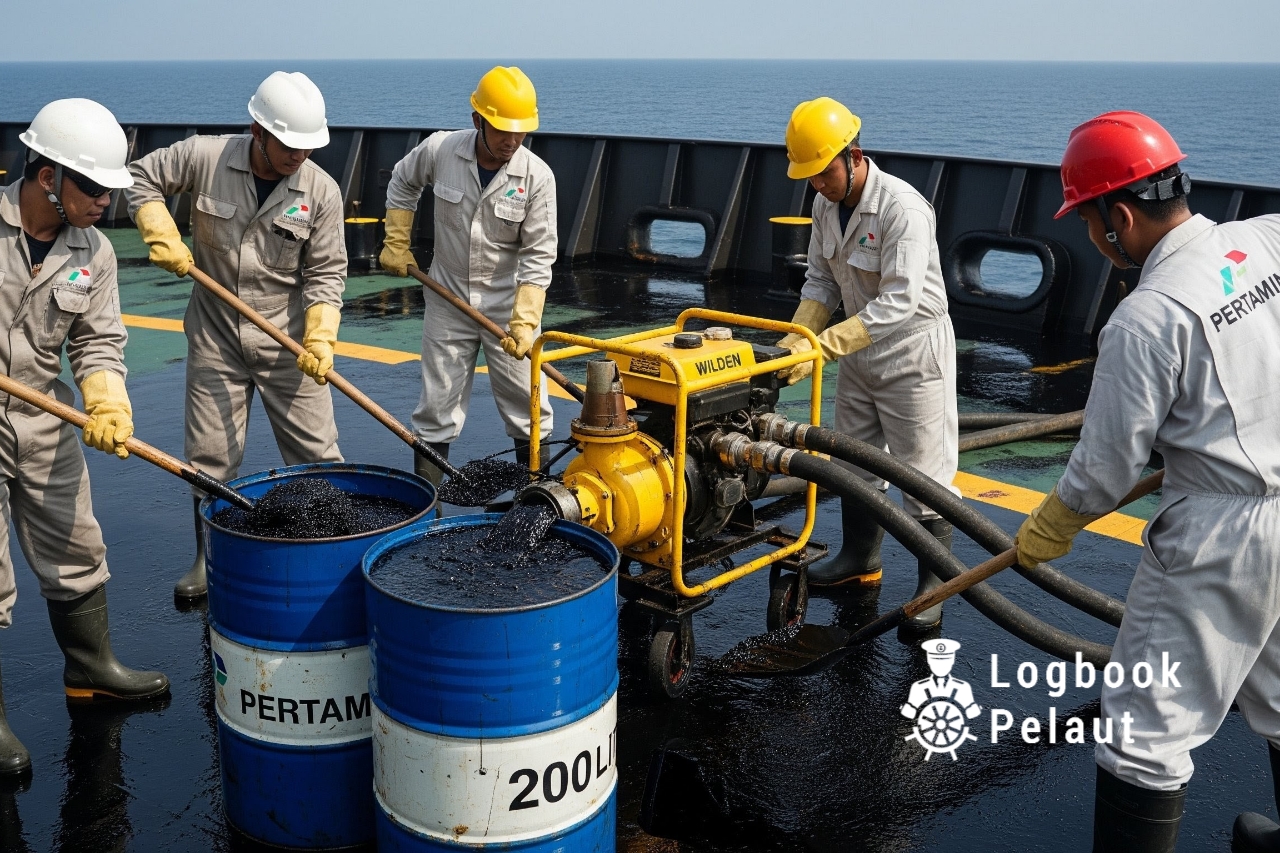Article Title: Emergency Response Simulation: The Key to Preparedness for an Oil Spill on a Tanker
Cargo handling operations on a tanker ship are high-risk activities that demand precision, coordination, and a high level of vigilance. One of the worst incidents that can occur is an oil overflow from a cargo tank. Ironically, this event is not uncommon and is almost always rooted in one primary cause: human error.
A lack of synergy among the crew, flawed cargo planning, and failures in oversight are the main triggers. To mitigate these risks and ensure the crew is always prepared, an Oil Pollution Drill is a mandatory activity on every vessel. Let’s explore how such a drill is conducted based on a realistic scenario.
The Scenario: An Emergency Call at Sea
Time: 11:30 ship’s time.
The deafening sound of the emergency alarm shatters the daily routine. This is not a real incident, but the start of a crucial exercise.
All crew members swiftly don their full Personal Protective Equipment (PPE) and immediately gather at the Muster Station. The atmosphere is tense yet orderly.
The Captain takes command and announces, “This is an Oil Pollution Drill. We have a simulated oil spill from Cargo Oil Tank No. 4 on the Port Side.”
The duties and responsibilities of each crew member are already clearly defined in the Muster List for this scenario. The drill commences.
Division of Tasks and Swift Team Action
In accordance with the Shipboard Oil Pollution Emergency Plan (SOPEP), a mandatory emergency plan on board, each individual moves according to their role.
- Captain (Master): As the highest-ranking commander, the Captain holds overall responsibility. His primary duty is to act as the command center, oversee the operation, and, most importantly, handle communication with the shore. In a real situation, the Captain would immediately contact the nearest coastal state’s designated contact point, as listed in the SOPEP document, to report the incident.
- Chief Officer: Acts as the on-scene commander. He is positioned directly at the spill location, leading the deck team to contain the spill as quickly and safely as possible. The objective is clear: to prevent oil from reaching the sea by all means necessary.
Engine Department Team:
- Chief Engineer: Remains on standby in the engine room to ensure all support systems are ready for use.
- Second Engineer: Is tasked with connecting the Wilden Pump (an air-operated diaphragm pump) to the compressed air line. This pump is vital for suctioning the spilled oil on deck and transferring it back into a cargo tank or a slop tank.
Deck Department Team:
- Bosun: Ensures that all deck scupper plugs are tightly sealed even before cargo operations begin. During the drill, he leads the preparation of Oil Spill Equipment from the dedicated storage locker (Oil Spill Store).
- On-Scene Responders (crew one): Assigned to spread sawdust over the spill area to absorb and limit its spread.
- On-Scene Responders (crew two) Prepares the Oil Dispersant in a sprayer to break down the oil molecules if necessary.
- Oiler and Deck Crew: Assist the Bosun in bringing out equipment such as sawdust (for absorption), Oil Dispersant Chemical, sprayers, plastic scoops, and brooms, and placing them near the simulated spill site.
Drill Conclusion and Evaluation
Time: 12:30 ship’s time.
After an hour of fully coordinated action, the Chief Officer reports to the Captain that the situation is under control. The simulated spill has been successfully managed, and the deck area is clean.
The Captain officially declares the drill concluded. In a brief debriefing session, the Captain provides his evaluation:
“The teamwork was excellent, and all procedures were followed correctly. The result is very satisfactory. However, there is one point for correction: the preparation of equipment from the Oil Spill Store needs to be faster. Speed is key in a real emergency. Let’s improve on this in our next drill.”
The Captain closes the session by thanking the entire crew for their cooperation and stressing the importance of maintaining the strong teamwork they have built.
Conclusion: Drills Are More Than Just Routine
An Oil Pollution Drill is more than just fulfilling a schedule or a regulation. It is a vital investment in the safety of the environment, the company’s assets, and the lives of the seafarers. Regular drills build “muscle memory,” sharpen responses, and, most importantly, strengthen team synergy to combat the greatest threat of all: human error. With continuously honed preparedness, a tanker can sail with greater confidence, ready to face even the worst-case scenario.









